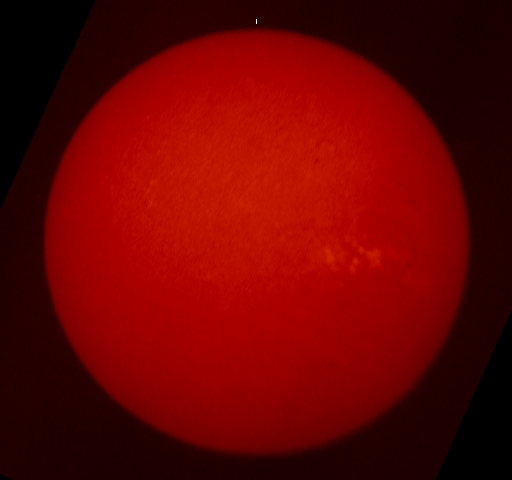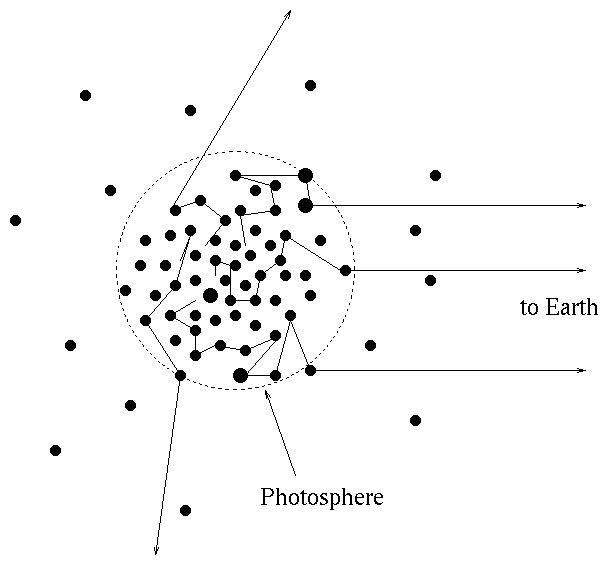The Photosphere: The Visible Surface of the Sun
The Sun does not have a
solid surface or interior and yet it appears to have
an edge.

 |
What Defines the Surface of the Sun?
We can only see the photons which are directed toward us. If photons
were free to stream from the center of the Sun (where the energy is produced)
then the Sun would appear quite small, maybe 20 % of its current radius.
However, near the center of the Sun,
the density of the particles is very high and
a photon cannot travel very far before it interacts with some matter. In the
center of the Sun, the density is ~150 grams per cubic centimeter (~14 times
denser than lead!). This tight packing means that a photon travels
less a hundredth of a centimeter before it interacts with a particle. Because
of this, photons are in a sense trapped and must slowly diffuse
to the surface of the Sun. |
The photons are trapped (technically, we say that their mean free paths
are short), over a sphere whose radius is around 700,000 kilometers. The point
where the mean free path becomes large, defines the edge of the Sun.
The visible disk of the Sun
(the visible surface of the Sun), is referred
to as the
Photosphere
.



